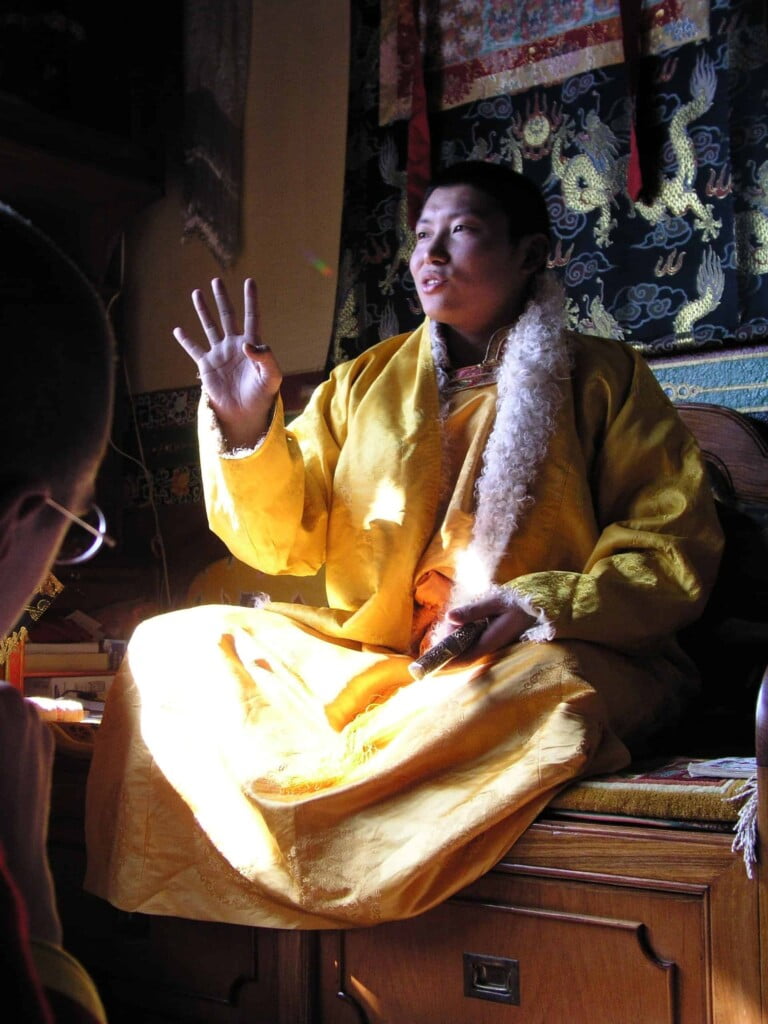Sadhana practice—what is it all about? Sanskrit Sadhana or Tibetan sgrub thabs, literally means “a means of accomplishing.” In this audio clip from February 2015 in Nepal, a student asks Phakchok Rinpoche about the benefits of practicing according to this type of ritual text. When we are beginners, we often have such doubts. And that’s natural–it is great to ask these questions! We want to understand the reasons behind the practice and we may be uncertain of why we are instructed to make use of these texts.
Listen to the Audio
SĀDHANA PRACTICE: THREE PILLARS
Rinpoche reveals three “pillars” of the practice. So, when we engage in ritual practice, we rely on these three pillars.
- The first pillar should always be the motivation of bodhicitta.
- The second pillar is devotion and pure perception.
- The third pillar is learning meditation–the realization of one’s own nature.
SĀDHANA PRACTICE STRUCTURE
Rinpoche points out that every sādhana is structured within this framework that consists of:
- Preparation
- Main part
- Conclusion
These texts contain very profound meaning. Moreover, these practices condense the entire Buddhist path, from the teachings of the general vehicle through to teachings on the nature of mind. Rinpoche describes sādhana as the “essence of tantra”. Once we understand the benefits, we will be inspired to do these practices every day. But, we need to know what the practice contains and why it is important. In this way, we will want to reach accomplishment through these practices.










Responses